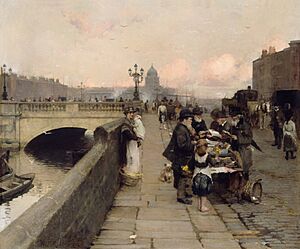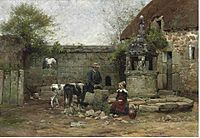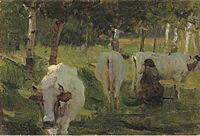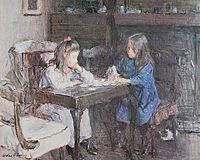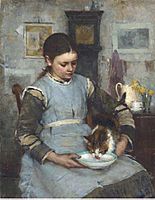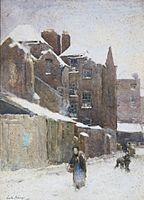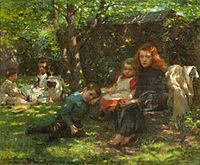Walter Osborne facts for kids
Quick facts for kids
Walter Osborne
|
|
|---|---|
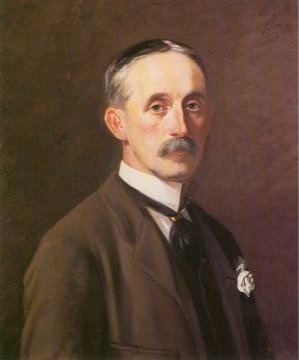 |
|
| Born | 17 June 1859 |
| Died | 24 April 1903 (aged 43) |
| Nationality | Irish |
| Known for | Oil landscape |
| Awards | Taylor Prize; Royal Hibernian Academy |
Walter Frederick Osborne (born June 17, 1859 – died April 24, 1903) was an Irish artist. He was known for his impressionist paintings and for showing everyday life. He often painted people, especially women, children, and the poor.
Walter Osborne also painted scenes of cities and the countryside. He made many artworks using oil paints, watercolours, and pencils. He was very talented from a young age.
He studied art in Belgium and later spent time in England and France. There, he learned about the Impressionist style of painting. Walter Osborne earned money by painting portraits and landscapes. But he is most famous today for his pictures of working-class people in Ireland.
Walter Osborne was a friendly and popular person. He sadly died at 43 years old from pneumonia. Many people believe he was just about to become even more famous. Today, he is seen as a very important Irish artist.
Contents
The Artist's Life
Early Years in Dublin
Walter Osborne was born in Rathmines, a part of Dublin, Ireland. His father, William Osborne, was also a successful painter. William mostly painted animals like horses and dogs. He often painted pets for wealthy Irish families.
Walter learned a lot about painting animals from his father. He created many animal paintings himself. One famous one is A New Arrival from 1885. It shows children with their pets. He also painted a series of cows. These paintings showed a gentle and realistic view of animals.
Walter went to school at Rathmines School. He also studied at the Royal Hibernian Academy art school.
Becoming a Successful Painter
Walter Osborne won the Taylor Prize in 1881 and 1882. This was the highest award for art students in Ireland at that time. He won it while studying at the Royal Academy of Fine Arts in Antwerp, Belgium.
He was influenced by famous painters like Peter Paul Rubens and Jules Bastien-Lepage. In 1883, Walter moved to Brittany, a region in France. There, he painted his well-known work, Apple Gathering, Quimperlé. This painting is now in the National Gallery of Ireland.
Soon after, he moved to England. He worked with other artists like Nathaniel Hill. During this time, he often visited Dublin. He made sketches for his most famous series of paintings. These showed the daily lives of poor people in the city.
Even though these street paintings are highly valued today, they did not sell well back then. So, Walter painted portraits of middle-class people to earn money. These portraits were important for his income.
In 1886, he became a member of the Royal Hibernian Academy. He received many requests to paint portraits. This was very important because he did not have much money of his own. After his sister passed away, he helped care for her daughter. His parents also started to rely on him for money.
In 1892, he moved back to his family home in Ireland. He also had an art studio in Dublin. He spent a lot of time painting outdoors. He painted scenes around St. Patrick's Cathedral and in the countryside. He was well-liked and had many friends, including Sir Thornely Stoker, the brother of Bram Stoker.
His Final Years
In the early 1900s, Walter's mother became ill. He spent a lot of time taking care of her. In 1903, he was gardening and caught a chill. He didn't take care of it, and it turned into pneumonia, a serious lung illness.
Walter Osborne sadly died from pneumonia on April 24, 1903. He was only 43 years old. He is buried in Mount Jerome Cemetery.
Some art experts believe he was just about to reach his full artistic potential. His last painting was Tea in the Garden. It combined naturalism (showing things as they are) and impressionism (showing light and feeling). This painting was not finished when he died. It is now in the Hugh Lane Municipal Gallery in Dublin. Today, Walter Osborne's artworks are very popular and valuable to collectors.
Gallery
-
Galway Market Scene


